John Locke’s opened this law in 1691

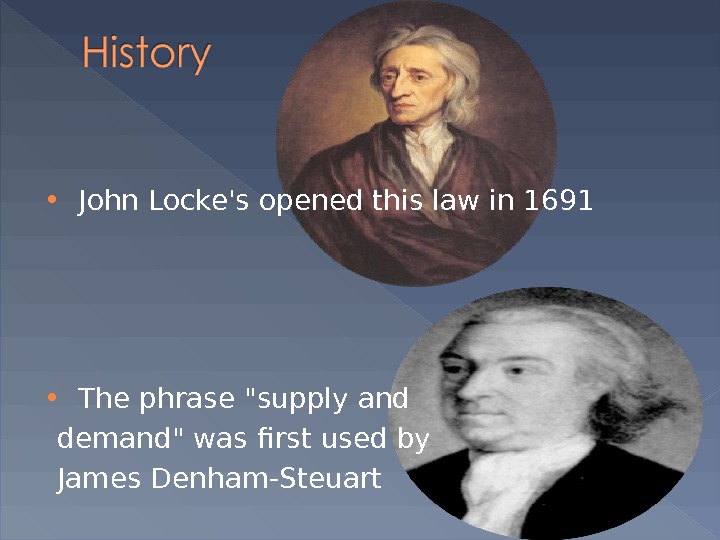
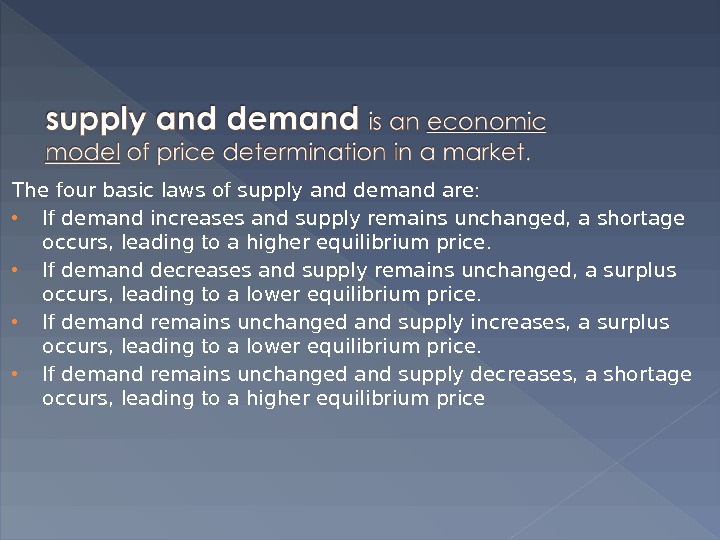
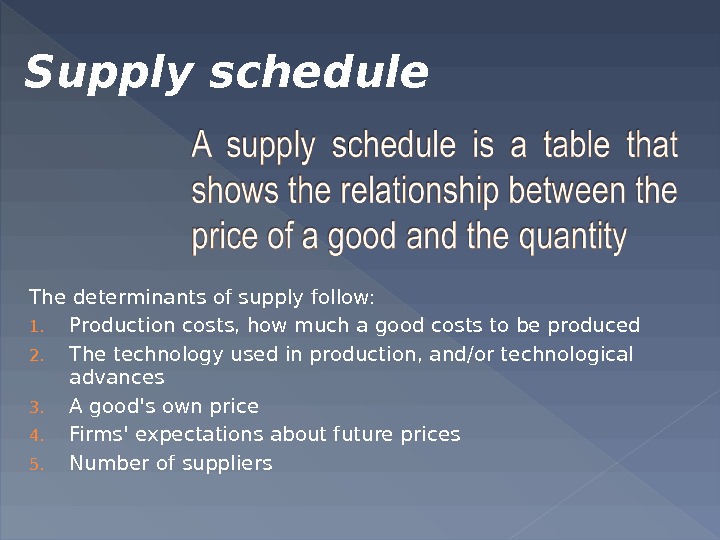

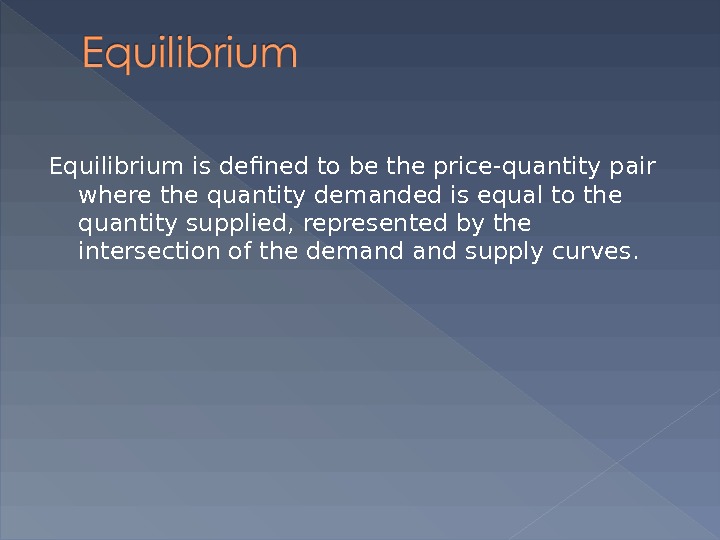
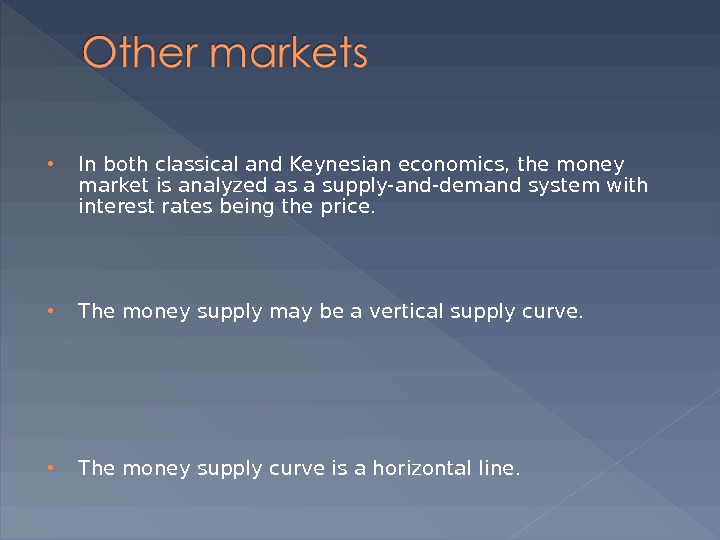
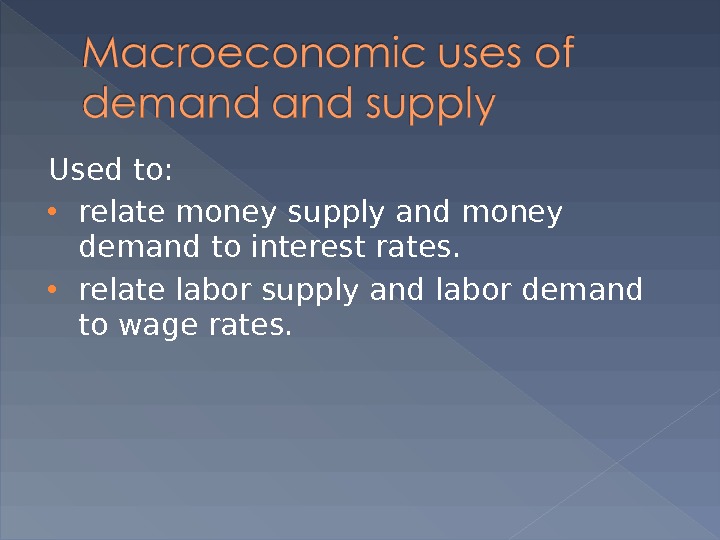

- Размер: 1 Mегабайта
- Количество слайдов: 9
Описание презентации John Locke’s opened this law in 1691 по слайдам

 John Locke’s opened this law in 1691 The phrase «supply and demand» was first used by James Denham-Steuart
John Locke’s opened this law in 1691 The phrase «supply and demand» was first used by James Denham-Steuart
 The four basic laws of supply and demand are: If demand increases and supply remains unchanged, a shortage occurs, leading to a higher equilibrium price. If demand decreases and supply remains unchanged, a surplus occurs, leading to a lower equilibrium price. If demand remains unchanged and supply increases, a surplus occurs, leading to a lower equilibrium price. If demand remains unchanged and supply decreases, a shortage occurs, leading to a higher equilibrium price
The four basic laws of supply and demand are: If demand increases and supply remains unchanged, a shortage occurs, leading to a higher equilibrium price. If demand decreases and supply remains unchanged, a surplus occurs, leading to a lower equilibrium price. If demand remains unchanged and supply increases, a surplus occurs, leading to a lower equilibrium price. If demand remains unchanged and supply decreases, a shortage occurs, leading to a higher equilibrium price
 The determinants of supply follow: 1. Production costs, how much a good costs to be produced 2. The technology used in production, and/or technological advances 3. A good’s own price 4. Firms’ expectations about future prices 5. Number of suppliers. Supply schedule
The determinants of supply follow: 1. Production costs, how much a good costs to be produced 2. The technology used in production, and/or technological advances 3. A good’s own price 4. Firms’ expectations about future prices 5. Number of suppliers. Supply schedule
 The determinants of demand follow: 1. Income 2. Tastes and preferences 3. Prices of related goods and services 4. Consumers’ expectations about future prices and incomes that can be checked 5. Number of potential consumers A demand schedule, depicted graphically as the demand curve, represents the amount of some good that buyers are willing and able to purchase at various prices
The determinants of demand follow: 1. Income 2. Tastes and preferences 3. Prices of related goods and services 4. Consumers’ expectations about future prices and incomes that can be checked 5. Number of potential consumers A demand schedule, depicted graphically as the demand curve, represents the amount of some good that buyers are willing and able to purchase at various prices
 Equilibrium is defined to be the price-quantity pair where the quantity demanded is equal to the quantity supplied, represented by the intersection of the demand supply curves.
Equilibrium is defined to be the price-quantity pair where the quantity demanded is equal to the quantity supplied, represented by the intersection of the demand supply curves.
 In both classical and Keynesian economics, the money market is analyzed as a supply-and-demand system with interest rates being the price. The money supply may be a vertical supply curve. The money supply curve is a horizontal line.
In both classical and Keynesian economics, the money market is analyzed as a supply-and-demand system with interest rates being the price. The money supply may be a vertical supply curve. The money supply curve is a horizontal line.
 Used to : relate money supply and money demand to interest rates. relate labor supply and labor demand to wage rates.
Used to : relate money supply and money demand to interest rates. relate labor supply and labor demand to wage rates.

